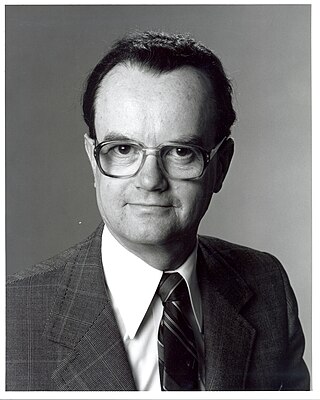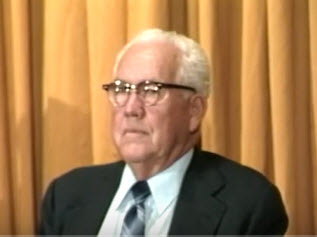Related Research Articles

Statistics is the discipline that concerns the collection, organization, analysis, interpretation, and presentation of data. In applying statistics to a scientific, industrial, or social problem, it is conventional to begin with a statistical population or a statistical model to be studied. Populations can be diverse groups of people or objects such as "all people living in a country" or "every atom composing a crystal". Statistics deals with every aspect of data, including the planning of data collection in terms of the design of surveys and experiments.
The following outline is provided as an overview of and topical guide to statistics:
In statistics, point estimation involves the use of sample data to calculate a single value which is to serve as a "best guess" or "best estimate" of an unknown population parameter. More formally, it is the application of a point estimator to the data to obtain a point estimate.
The American Statistical Association (ASA) is the main professional organization for statisticians and related professionals in the United States. It was founded in Boston, Massachusetts on November 27, 1839, and is the second-oldest continuously operating professional society in the U.S. behind the Massachusetts Medical Society, founded in 1781). ASA services statisticians, quantitative scientists, and users of statistics across many academic areas and applications. The association publishes a variety of journals and sponsors several international conferences every year.
In statistics, imputation is the process of replacing missing data with substituted values. When substituting for a data point, it is known as "unit imputation"; when substituting for a component of a data point, it is known as "item imputation". There are three main problems that missing data causes: missing data can introduce a substantial amount of bias, make the handling and analysis of the data more arduous, and create reductions in efficiency. Because missing data can create problems for analyzing data, imputation is seen as a way to avoid pitfalls involved with listwise deletion of cases that have missing values. That is to say, when one or more values are missing for a case, most statistical packages default to discarding any case that has a missing value, which may introduce bias or affect the representativeness of the results. Imputation preserves all cases by replacing missing data with an estimated value based on other available information. Once all missing values have been imputed, the data set can then be analysed using standard techniques for complete data. There have been many theories embraced by scientists to account for missing data but the majority of them introduce bias. A few of the well known attempts to deal with missing data include: hot deck and cold deck imputation; listwise and pairwise deletion; mean imputation; non-negative matrix factorization; regression imputation; last observation carried forward; stochastic imputation; and multiple imputation.
Douglas Paul Wiens is a Canadian statistician; he is a professor in the Department of Mathematical and Statistical Sciences at the University of Alberta.

Ivan Peter Fellegi, OC is a Hungarian-Canadian statistician and researcher who was the Chief Statistician of Canada from 1985 to 2008.
William Henry Kruskal was an American mathematician and statistician. He is best known for having formulated the Kruskal–Wallis one-way analysis of variance, a widely used nonparametric statistical method.

In statistics, the jackknife is a cross-validation technique and, therefore, a form of resampling. It is especially useful for bias and variance estimation. The jackknife pre-dates other common resampling methods such as the bootstrap. Given a sample of size , a jackknife estimator can be built by aggregating the parameter estimates from each subsample of size obtained by omitting one observation.

Herman Otto Hartley was a German American statistician. He made significant contributions in many areas of statistics, mathematical programming, and optimization. He also founded Texas A&M University's Department of Statistics.
Shayle Robert Searle PhD was a New Zealand mathematician who was professor emeritus of biological statistics at Cornell University. He was a leader in the field of linear and mixed models in statistics, and published widely on the topics of linear models, mixed models, and variance component estimation.

Morris Howard Hansen (1910–1990) was an American statistician. While at the United States Census Bureau, he was one of the first to develop methods for statistical sampling and made contributions in many areas of surveys and censuses.
Marie Davidian is an American biostatistician known for her work in longitudinal data analysis and precision medicine. She is the J. Stuart Hunter Distinguished Professor of Statistics at North Carolina State University. She was president of the American Statistical Association for 2013.

Imputation and Variance Estimation Software (IVEware) is a collection of routines written under various platforms and packaged to perform multiple imputations, variance estimation and, in general, draw inferences from incomplete data. It can also be used to perform analysis without any missing data. IVEware defaults to assuming a simple random sample, but uses the Jackknife Repeated Replication or Taylor Series Linearization techniques for analyzing data from complex surveys.
Margaret Gurney was an American mathematician, statistician, and computer programmer. Originally trained in the mathematical study of partial differential equations at Swarthmore College, Brown University, and the University of Göttingen, she came to work for the United States Census Bureau. There, she became known for her expertise in sampling, stratified sampling, and survey methodology. At the Census Bureau she also worked as an early programmer of the UNIVAC I computer. Later, she became an international consultant, teaching statistical methods in developing countries. She won the Department of Commerce Silver Medal and was recognized as a Fellow of the American Statistical Association.
Sharon Lynn Lohr is an American statistician. She is an Emeritus Dean’s Distinguished Professor of Statistics at Arizona State University, and an independent statistical consultant. Her research interests include survey sampling, design of experiments, and applications of statistics in education and criminology.
Katherine Jenny Thompson is a statistician in the United States Census Bureau, where she is Methodology Director of Complex Survey Methods and Analysis Group in the Economic Statistical Methods Division.
Polly A. Phipps is an American sociologist and social statistician. She is a Senior Survey Methodologist in the Office of Survey Methods Research of the US Bureau of Labor Statistics. She has also collaborated with several societies of mathematicians to survey the employment of recent doctorates in mathematics.
Jill A. Dever is an American statistician specializing in survey methodology who works as a senior researcher and senior director in the division for statistical & data sciences at RTI International.
Beth L. Chance is an American statistics educator. She is a professor of statistics at the California Polytechnic State University.
References
- 1 2 3 4 5 6 7 Curriculum vitae (PDF), University of Maryland, College Park, 2014, retrieved 2020-06-27
- ↑ COVID-19: How Has It Changed Americans' Attitudes and Behaviors?, Westat, retrieved 2020-06-27
- 1 2 Montaquila, Jill Marie (1998), All-Cases Imputation Variance Estimator: A New Approach to Variance Estimation for Imputed Data (thesis), American University, doi:10.57912/23867076.v1, hdl:1961/thesesdissertations:2640
- ↑ "Presidents of the WSS, 1981–", Washington Statistical Society Past and Present: 1896 to 2012 (PDF), Washington Statistical Society, 2012, p. 8, retrieved 2020-06-27
- ↑ Government Statistics Section Officers, American Statistical Association, retrieved 2020-06-27
- ↑ 3 Westat Statisticians Honored at 2016 JSM, Westat, 24 August 2016, retrieved 2020-06-27